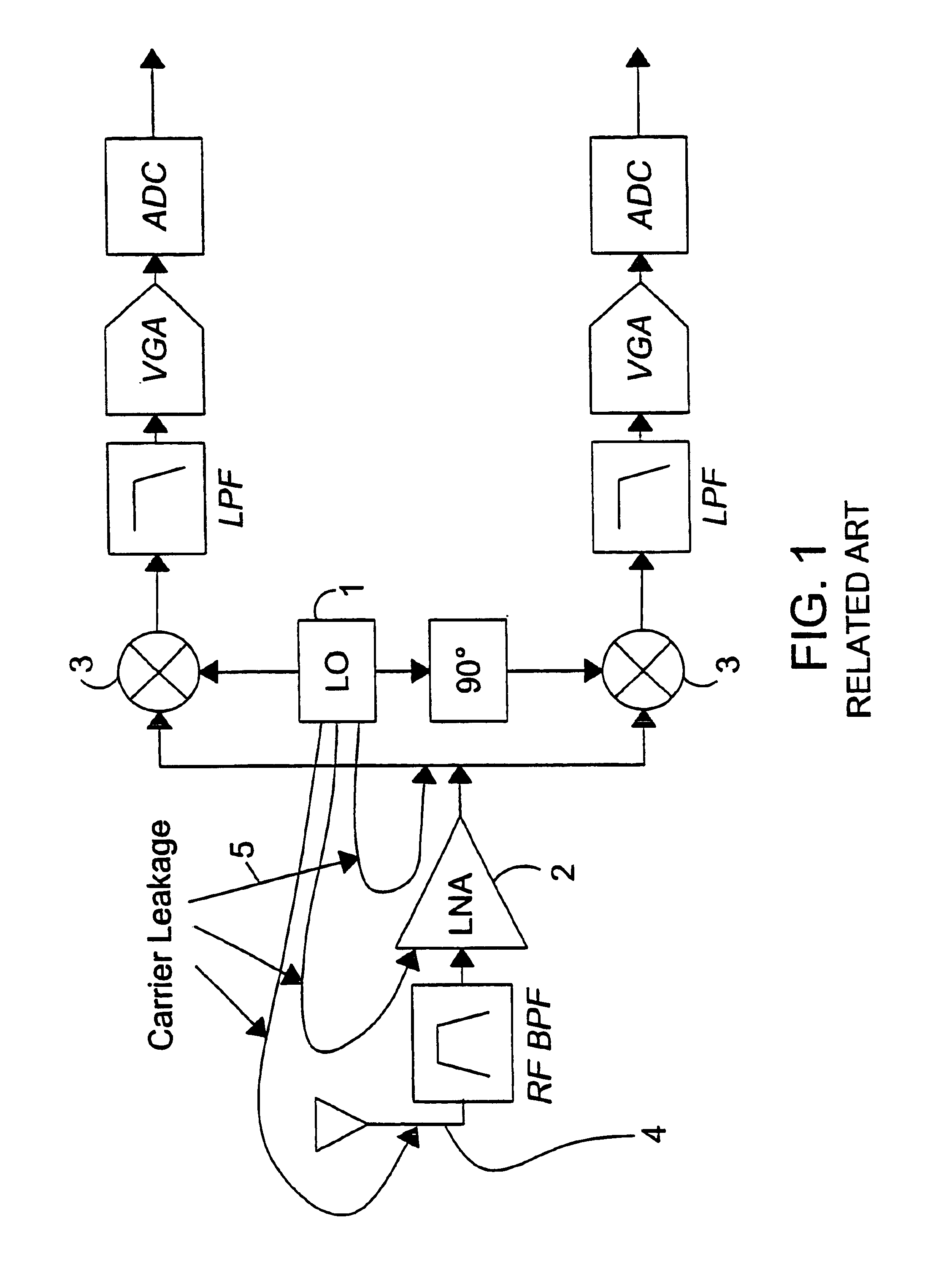RF front end with reduced carrier leakage
a front end and carrier technology, applied in the direction of transmission, oscillation generator, electrically long antenna, etc., can solve the problems of carrier leakage, difficult to solve dc offset problem, delay in direct conversion receiver use in the wireless market, etc., to reduce carrier leakage and reduce dc offset at mixer output
- Summary
- Abstract
- Description
- Claims
- Application Information
AI Technical Summary
Benefits of technology
Problems solved by technology
Method used
Image
Examples
Embodiment Construction
Reference will now be made in detail to the preferred embodiments of the present invention, examples of which are illustrated in the accompanying drawings.
FIG. 4 illustrates a first preferred embodiment of an RF front-end for reducing or eliminating the DC offset. An antenna 401 provides a received radio frequency (RF) signal to RF bandpass filter (BPF) 402. RF BPF 402 filters the received RF signal to reduce or minimize the spectral energy of frequency components, outside the intended pass band, passed to a low noise amplifier (LNA) 403. LNA 403 amplifies the pass band signal, centered about the carrier frequency, that it receives from RF BPF 402 and passes the amplified signal to an optional image reject filter 404. Image reject filter 404 minimizes the spectral energy of the image signal received from LNA 403 and passes the filtered signal to both the in-phase first mixer 405 and the quadrature-phase first mixer 406. A variable frequency local oscillator (LO) 408 supplies a first...
PUM
 Login to View More
Login to View More Abstract
Description
Claims
Application Information
 Login to View More
Login to View More - R&D
- Intellectual Property
- Life Sciences
- Materials
- Tech Scout
- Unparalleled Data Quality
- Higher Quality Content
- 60% Fewer Hallucinations
Browse by: Latest US Patents, China's latest patents, Technical Efficacy Thesaurus, Application Domain, Technology Topic, Popular Technical Reports.
© 2025 PatSnap. All rights reserved.Legal|Privacy policy|Modern Slavery Act Transparency Statement|Sitemap|About US| Contact US: help@patsnap.com



